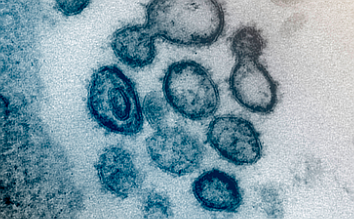Since the coronavirus pandemic took hold in the United States, an entirely new vernacular has cropped up to discuss outbreaks and state responses. Here are some key terms, with definitions based on information from Gov. Asa Hutchinson's news conferences, the Arkansas Department of Health and the Centers for Disease Control and Prevention.
Coronavirus vs. SARS-CoV-2 vs. covid-19
Although these terms are often used interchangeably, there are slight differences between them. Coronavirus is a general term for a type of virus. SARS-CoV-2 is the name for the particular coronavirus that has caused the pandemic. Other types of coronaviruses include MERS-CoV, the coronavirus that causes Middle East Respiratory Syndrome, or MERS, and SARS-CoV, the coronavirus that causes severe acute respiratory syndrome, or SARS.
The term covid-19 is used to describe the illness a person gets when SARS-CoV-2 infects their body.
PCR test
A polymerase chain reaction or PCR test, also called a molecular test, is the most common test used to determine if the virus is in someone’s body. Generally a nasal swab is taken, then sent to a lab which processes the specimen and can determine if the person is infected with the virus. PCR tests are considered highly accurate. They can determine if someone has the virus even if they aren't showing symptoms, but results usually take several days to come back due to processing time.
Antigen test
Antigen tests are becoming more common to determine if someone is ill with covid-19. The test detects certain proteins that indicate the presence of SARS-CoV-2 in the body. Antigen tests are less accurate than PCR tests and are often called rapid tests because results can come back in a matter of minutes.
Antibody test
Antibody tests or serology tests cannot determine if someone is currently ill with covid-19 but rather if someone was previously infected. The test detects the presence of antibodies, which are proteins made to fight off viruses. The presence of certain antibodies indicates a person has experienced a covid-19 infection.
Confirmed cases and deaths
Arkansas differentiates between positive results from PCR tests versus those from antigen tests. Positive results from PCR tests are considered confirmed cases of covid-19.
A confirmed death occurs when someone dies after their infection with covid-19 was confirmed via PCR test.
Probable cases and deaths
Positive results from antigen tests are considered probable cases. However, for the purposes of contact tracing and case investigation, the state treats probable and confirmed cases the same.
A probable death is recorded if someone who died had a positive antigen test; if someone who died had covid-19 symptoms and known contact with a confirmed case prior to death; or if someone’s death certificate lists covid-19 as a contributing factor but the infection wasn’t confirmed.
Positivity rate
The percentage of tests performed in Arkansas that come back positive determine the positivity rate.
The seven-day rolling average of percent positive cases assesses the positivity rate over the course of a week and is generally considered more useful than a single day’s positivity rate when evaluating the severity of the state’s outbreak.
The positivity rate shows whether the level of testing being performed is adequate. If the positivity rate is high (federal guidelines set 10% or less as the positivity rate goal), it indicates not enough tests are being performed and a significant number of positive cases are likely going undetected.
This in turn is likely to contribute to unchecked spread of the virus. If the positivity rate is low, it indicates the state has a good idea of how many cases are actually active in the state.
Additionally, if the total number of tests is relatively stable and the positivity rate is going up, that likely means there is increased spread of the virus in the community. If the testing level is stable and the positivity rate is going down, that likely means there is decreased spread in the community.
Congregate setting
This term is used to describe a place where a large group of people live together. This is relevant to the pandemic because congregate settings allow for rapid spread of the virus if it enters a given area. Prisons, nursing homes, residential facilities for people with disabilities and other places can be called congregate settings.
Community spread
Community spread is a term to describe when people are catching the virus somewhere other than institutional settings, and some may not know where or by whom they were infected.
Asymptomatic spread
Even if someone infected with the virus does not show any symptoms, they can still spread it. Sometimes newly infected people may cause asymptomatic spread because it can take days or even more than a week for a person to develop symptoms and know they’re ill after exposure. Other people may never show symptoms, but they will be able to spread the virus throughout the course of their infection.
False negative
When a person receives a negative result from a PCR or antigen test but actually is ill with the virus, that is a false negative. False negatives are more likely when a person is tested too soon after exposure. Health officials recommend people who have been in contact with someone known to have the virus to wait several days after they were exposed before getting tested.
False negatives are also more common when someone not experiencing symptoms takes an antigen test.
Active cases
The number of active cases is the number of people in the state who are currently infected with the virus — the figure excludes anyone who was infected but has since recovered or died.
Ventilator
A ventilator is a machine used to help patients experiencing serious respiratory issues continue breathing. It mechanically pumps air into the lungs.
